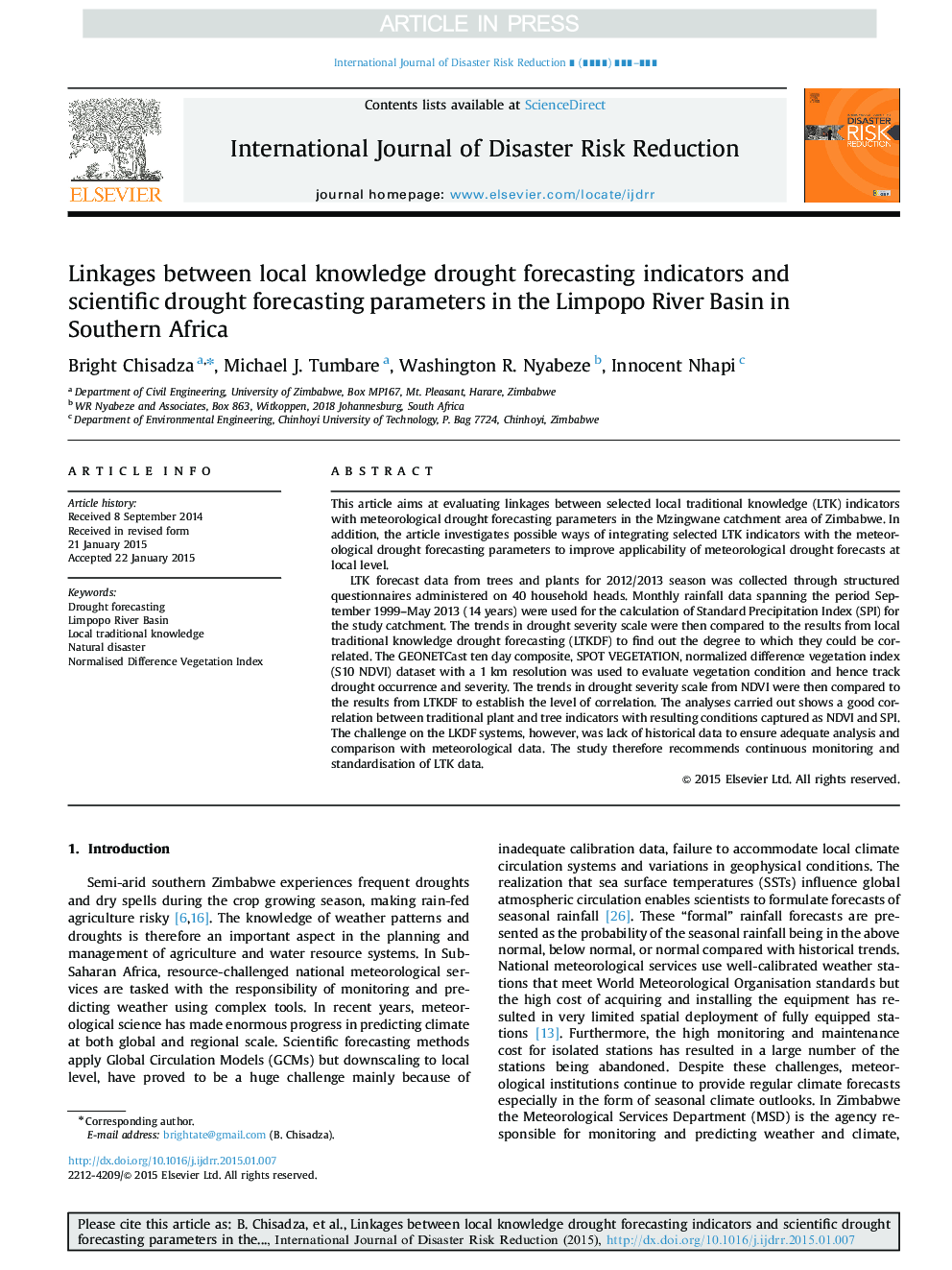| Article ID | Journal | Published Year | Pages | File Type |
|---|---|---|---|---|
| 7473319 | International Journal of Disaster Risk Reduction | 2015 | 8 Pages |
Abstract
LTK forecast data from trees and plants for 2012/2013 season was collected through structured questionnaires administered on 40 household heads. Monthly rainfall data spanning the period September 1999-May 2013 (14 years) were used for the calculation of Standard Precipitation Index (SPI) for the study catchment. The trends in drought severity scale were then compared to the results from local traditional knowledge drought forecasting (LTKDF) to find out the degree to which they could be correlated. The GEONETCast ten day composite, SPOT VEGETATION, normalized difference vegetation index (S10 NDVI) dataset with a 1Â km resolution was used to evaluate vegetation condition and hence track drought occurrence and severity. The trends in drought severity scale from NDVI were then compared to the results from LTKDF to establish the level of correlation. The analyses carried out shows a good correlation between traditional plant and tree indicators with resulting conditions captured as NDVI and SPI. The challenge on the LKDF systems, however, was lack of historical data to ensure adequate analysis and comparison with meteorological data. The study therefore recommends continuous monitoring and standardisation of LTK data.
Related Topics
Physical Sciences and Engineering
Earth and Planetary Sciences
Geophysics
Authors
Bright Chisadza, Michael J. Tumbare, Washington R. Nyabeze, Innocent Nhapi,
